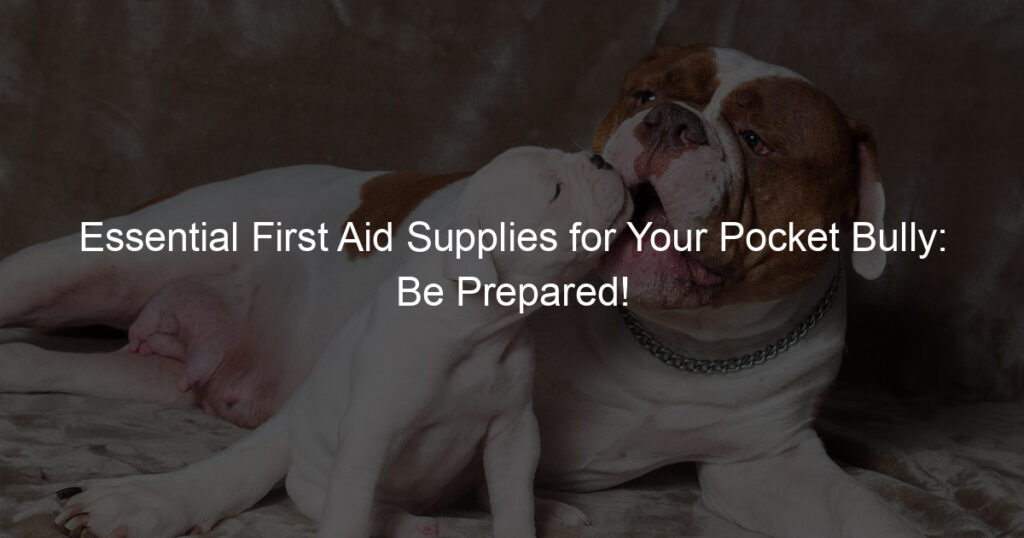
Introduction to Pocket Bullies Sleep Patterns
As a loving owner of a Pocket Bully, you might have noticed that your furry friend loves to sleep. But have you ever wondered about the importance of sleep for your Pocket Bully or how their sleep patterns compare to other dog breeds? In this blog post, we will explore these topics in detail.
- Understanding the importance of sleep for Pocket Bullies
- How sleep patterns differ across dog breeds
Sleep is as crucial for your Pocket Bully as it is for you. It’s during sleep that your dog’s body repairs itself, builds muscle tissue, and strengthens the immune system. Sleep also plays a vital role in your dog’s learning and memory capabilities. A well-rested Pocket Bully is more likely to be alert, energetic, and happy.
Just like humans, dogs also have different sleep patterns. While the average dog sleeps for about 12 to 14 hours a day, the sleep duration can vary depending on the breed, age, and health of the dog. Pocket Bullies, for instance, are known to sleep for about 12 to 14 hours a day, which is pretty standard for their size and breed. On the other hand, breeds like the Newfoundland and the Saint Bernard, which are larger and more lethargic, may sleep for up to 18 hours a day.
Understanding your Pocket Bully’s sleep patterns can help you provide the best care for your pet. It can help you identify any changes in their sleep habits, which could be an indication of health issues. So, keep an eye on your Pocket Bully’s sleep and ensure they are getting the rest they need to stay healthy and happy.
Normal Sleep Schedule for Pocket Bullies
Understanding the normal sleep schedule of your Pocket Bullies is crucial for their health and well-being. A well-rested dog is a happy and healthy dog. Let’s delve into the sleep cycle of these adorable pets.
Understanding Pocket Bullies Sleep Cycle
The sleep cycle of a Pocket Bullies is not too different from ours. It consists of several stages, each with its unique characteristics. Recognizing these stages can help you ensure your pet is getting the right amount of rest.
- Stages of a Pocket Bullies sleep cycle
- How to recognize each stage
Just like humans, Pocket Bullies go through two primary stages of sleep: Rapid Eye Movement (REM) and Non-Rapid Eye Movement (NREM). NREM is the first stage of the cycle, where your pet’s body relaxes and begins to repair and rejuvenate. REM is the stage where dogs dream, and it’s often characterized by twitching, whimpering, or even barking.
Recognizing each stage of your Pocket Bullies’ sleep cycle can be quite simple. During the NREM stage, your pet will be still and quiet, breathing deeply and regularly. As they transition into the REM stage, you might notice changes such as irregular breathing, rapid eye movements under closed eyelids, and physical movements like twitching or wagging tails. These signs indicate that your pet is dreaming.
Understanding your Pocket Bullies’ sleep cycle can help you ensure they’re getting the rest they need for their health and happiness. It’s important to remember that each dog is unique, and what’s normal for one might not be for another. Always consult with a veterinarian if you have concerns about your pet’s sleep patterns.
Sleep Requirements for Pocket Bullies
Understanding the sleep requirements of Pocket Bullies is crucial for their health and well-being. Let’s delve into how many hours of sleep these adorable canines need and the factors that influence their sleep requirements.
- How many hours of sleep do Pocket Bullies need?
- Factors that influence sleep requirements
- Age: Puppies and older dogs generally require more sleep than adult dogs.
- Health: Dogs with health issues may need more rest to recover.
- Activity Level: Highly active dogs will need more sleep to replenish their energy levels.
- Diet: A balanced diet can contribute to a healthy sleep pattern.
Pocket Bullies, like most dogs, require a significant amount of sleep. On average, a healthy adult Pocket Bully needs about 12-14 hours of sleep per day. However, puppies, older dogs, and those with health issues may require more sleep, sometimes up to 18-20 hours a day. Remember, adequate sleep is vital for their growth, development, and overall health.
Several factors can influence the sleep requirements of Pocket Bullies. These include:
It’s important to monitor your Pocket Bully’s sleep patterns and consult with a vet if you notice any significant changes. A sudden increase or decrease in sleep could indicate a health problem.
In conclusion, ensuring your Pocket Bully gets the right amount of sleep is essential for their health and happiness. Keep an eye on their sleep patterns and make adjustments as necessary to ensure they’re getting the rest they need.
Pocket Bullies Sleep Habits
Understanding the sleep habits of your Pocket Bullies is crucial for their health and happiness. Let’s delve into their sleep behavior and learn how to recognize healthy sleep patterns.
Pocket Bullies Sleep Behavior
Pocket Bullies, like all dogs, have unique sleep behaviors. By observing these behaviors, you can gain insight into their comfort levels, health, and overall well-being.
- Common sleep positions and what they mean
- The Side Sleeper: This is a common position for Pocket Bullies. It indicates that they are comfortable and relaxed in their environment.
- The Donut: If your Pocket Bullies curl up in a tight ball, it may mean they are trying to conserve body heat or protect their belly.
- The Superman: This position, with all four legs stretched out, is often adopted by puppies. It allows them to get up and play at a moment’s notice.
- How to recognize healthy sleep behavior
There are several common sleep positions that Pocket Bullies may adopt, each with its own meaning:
Healthy sleep behavior in Pocket Bullies involves regular sleep patterns, a comfortable sleeping position, and a peaceful sleep without excessive movement or noise. If your Pocket Bullies are getting 12-14 hours of sleep a day, including naps, and they seem relaxed and refreshed upon waking, these are good signs of healthy sleep behavior.
Remember, every Pocket Bullies is unique and may have its own sleep habits. However, sudden changes in sleep behavior can be a sign of health issues and should be addressed with a veterinarian.
Healthy Sleep for Pocket Bullies
Ensuring your Pocket Bully gets a good night’s sleep is crucial for their overall health and well-being. Here are some steps you can take to promote healthy sleep habits in your pet:
- Creating a conducive sleep environment
- Establishing a consistent sleep schedule
A comfortable and quiet sleep environment is essential for your Pocket Bully. Make sure their sleeping area is clean, free from distractions, and has a comfortable bed. The temperature should be moderate – not too hot, not too cold. Some dogs prefer a bit of light, while others sleep better in the dark. Figure out what works best for your pet.
Consistency is key when it comes to sleep. Try to establish a regular sleep schedule for your Pocket Bully. This means setting a consistent bedtime and wake-up time. Dogs, like humans, have internal clocks and thrive on routine. A consistent sleep schedule will help regulate your pet’s body clock, leading to better sleep quality.
Remember, every dog is unique and what works for one might not work for another. It’s important to observe your Pocket Bully’s sleep patterns and adjust as necessary. With patience and consistency, you can help ensure your pet gets the restful sleep they need.
Pocket Bullies Sleep Disorders
Just like humans, Pocket Bullies can also experience sleep disorders. These conditions can affect their overall health and well-being. Understanding these disorders can help you ensure your pet’s good health.
Common Sleep Disorders in Pocket Bullies
There are several sleep disorders that can affect Pocket Bullies. These include insomnia, sleep apnea, and restless leg syndrome. Let’s delve into how you can recognize these disorders and when it’s time to seek veterinary help.
- Recognizing signs of sleep disorders
- When to seek veterinary help
Recognizing sleep disorders in your Pocket Bullies can be challenging. However, there are some signs you can look out for. These include excessive daytime sleepiness, difficulty falling asleep, frequent waking during the night, and abnormal breathing patterns during sleep. If your pet is showing any of these signs, it may be suffering from a sleep disorder.
If your Pocket Bullies is showing signs of a sleep disorder, it’s crucial to seek veterinary help as soon as possible. Sleep disorders can lead to other health complications if left untreated. If your pet is having trouble sleeping, is snoring excessively, or is acting unusually tired during the day, it’s time to consult with a vet.
Understanding sleep disorders in Pocket Bullies is crucial for their health and well-being. By recognizing the signs and seeking veterinary help when necessary, you can ensure your pet gets the care it needs.
Treatment and Management of Sleep Disorders
When it comes to treating and managing sleep disorders in Pocket Bullies, there are two main paths to consider: medical treatments and behavioral modifications. Both approaches have their benefits and can be effective depending on the specific sleep disorder and the individual dog’s needs.
- Medical treatments for sleep disorders
- Behavioral modifications for managing sleep disorders
Medical treatments are often the first line of defense when dealing with sleep disorders in Pocket Bullies. These treatments can range from prescription medications to over-the-counter remedies. For example, melatonin, a hormone that helps regulate sleep-wake cycles, is often used to treat insomnia in dogs. Other medications, like sedatives or anti-anxiety drugs, may be prescribed by a vet in more severe cases.
It’s important to note that while these treatments can be effective, they should always be used under the guidance of a veterinarian. Misuse of these medications can lead to other health problems. Always consult with your vet before starting any new medication regimen for your Pocket Bully.
Alongside medical treatments, behavioral modifications can also be a great way to manage sleep disorders in Pocket Bullies. These strategies aim to change the dog’s behavior and create a more conducive environment for sleep.
For example, establishing a consistent sleep schedule and creating a quiet, comfortable sleeping environment can greatly improve your dog’s sleep quality. Other strategies might include reducing your dog’s exposure to stimuli before bedtime, like turning off the TV or dimming the lights, and incorporating calming activities into their nighttime routine, like a gentle massage or quiet playtime.
Remember, every dog is unique and what works for one may not work for another. It’s important to be patient and persistent in finding the right combination of treatments and modifications that work best for your Pocket Bully.
In conclusion, treating and managing sleep disorders in Pocket Bullies requires a combination of medical treatments and behavioral modifications. Always consult with a veterinarian for the best course of action for your individual dog’s needs. With the right approach, your Pocket Bully can enjoy a healthy, restful sleep.
Pocket Bullies Sleep Training
Training your Pocket Bullies to sleep well is crucial for their health and happiness. Let’s explore some effective sleep training techniques.
Effective Sleep Training Techniques
There are two main aspects to consider when it comes to effective sleep training for your Pocket Bullies. These are establishing a sleep routine and encouraging healthy sleep habits.
- How to Establish a Sleep Routine
- Training Techniques to Encourage Healthy Sleep Habits
Establishing a sleep routine for your Pocket Bullies can be a game-changer. Start by setting a specific bedtime and wake-up time. Consistency is key here. Make sure to stick to these times as closely as possible, even on weekends. This will help your pet understand when it’s time to sleep and wake up.
Creating a peaceful sleeping environment is essential for encouraging healthy sleep habits. Make sure your Pocket Bullies have a comfortable and quiet place to sleep. Avoid feeding them large meals close to bedtime, as this can disrupt their sleep. Instead, try giving them a small snack a few hours before bed. It’s also a good idea to include some light exercise in their routine, as this can help tire them out and make it easier for them to fall asleep.
Remember, every Pocket Bullies is unique, and what works for one may not work for another. It may take some time and patience, but with consistent effort, you can help your Pocket Bullies develop healthy sleep habits that will benefit them for a lifetime.
Case Study: Successful Sleep Training
-
Introduction to the case study
Let’s take a closer look at a real-life example of successful sleep training with a Pocket Bully named Max. Max, a lively and energetic Pocket Bully, had difficulty maintaining a regular sleep schedule. His owners, the Johnson family, were concerned about his erratic sleep patterns and decided to implement a sleep training program.
-
Steps taken in sleep training
The Johnsons started by establishing a consistent bedtime routine for Max. This included a calm-down period before bed, during which they would dim the lights and reduce noise levels. They also ensured Max had plenty of exercise during the day to promote better sleep at night.
Next, they introduced a comfortable sleeping area for Max. They chose a quiet, dark corner of the house and equipped it with a cozy bed. They also used a white noise machine to drown out any disruptive noises.
Lastly, they maintained consistency. They stuck to the routine, even when Max seemed resistant. They understood that change takes time and patience is key when it comes to sleep training.
-
Results and key takeaways
After a few weeks of implementing these steps, Max’s sleep patterns improved significantly. He began sleeping through the night and waking up refreshed and energetic. His overall behavior and health also improved, showing the importance of a good night’s sleep.
Before Sleep Training After Sleep Training Erratic sleep patterns Consistent sleep schedule Restless during the day Energetic and alert during the day Health issues Improved overall health The key takeaway from this case study is the importance of consistency and patience in sleep training. It also highlights the positive impact of a good sleep routine on a Pocket Bully’s overall health and wellbeing.
Conclusion: Ensuring Healthy Sleep for Your Pocket Bullies
As we wrap up our discussion on the sleep patterns and habits of Pocket Bullies, it’s essential to remember the importance of healthy sleep for these adorable pets. Let’s take a quick recap and provide some final tips to ensure your Pocket Bullies get the rest they need.
- Recap of the importance of healthy sleep
- Final tips for promoting good sleep habits
- Establish a consistent sleep schedule and stick to it.
- Provide a comfortable and quiet sleeping environment.
- Avoid feeding your Pocket Bullies right before bedtime to prevent digestive issues that might disturb their sleep.
- Ensure they get enough exercise during the day to promote better sleep at night.
- Limit distractions in the sleeping area, such as noise or bright lights.
Healthy sleep is crucial for your Pocket Bullies’ overall well-being. It aids in their growth, development, and energy replenishment. Lack of sleep can lead to various health issues, including obesity, heart disease, and even behavioral problems. Therefore, ensuring your Pocket Bullies get the right amount of sleep is not just a matter of comfort, but a necessity for their health and happiness.
Here are some final tips to promote good sleep habits for your Pocket Bullies:
In conclusion, understanding and promoting healthy sleep habits for your Pocket Bullies are essential aspects of pet ownership. Remember, a well-rested Pocket Bully is a happy and healthy one. Here’s to many nights of peaceful slumber for your furry friends!













